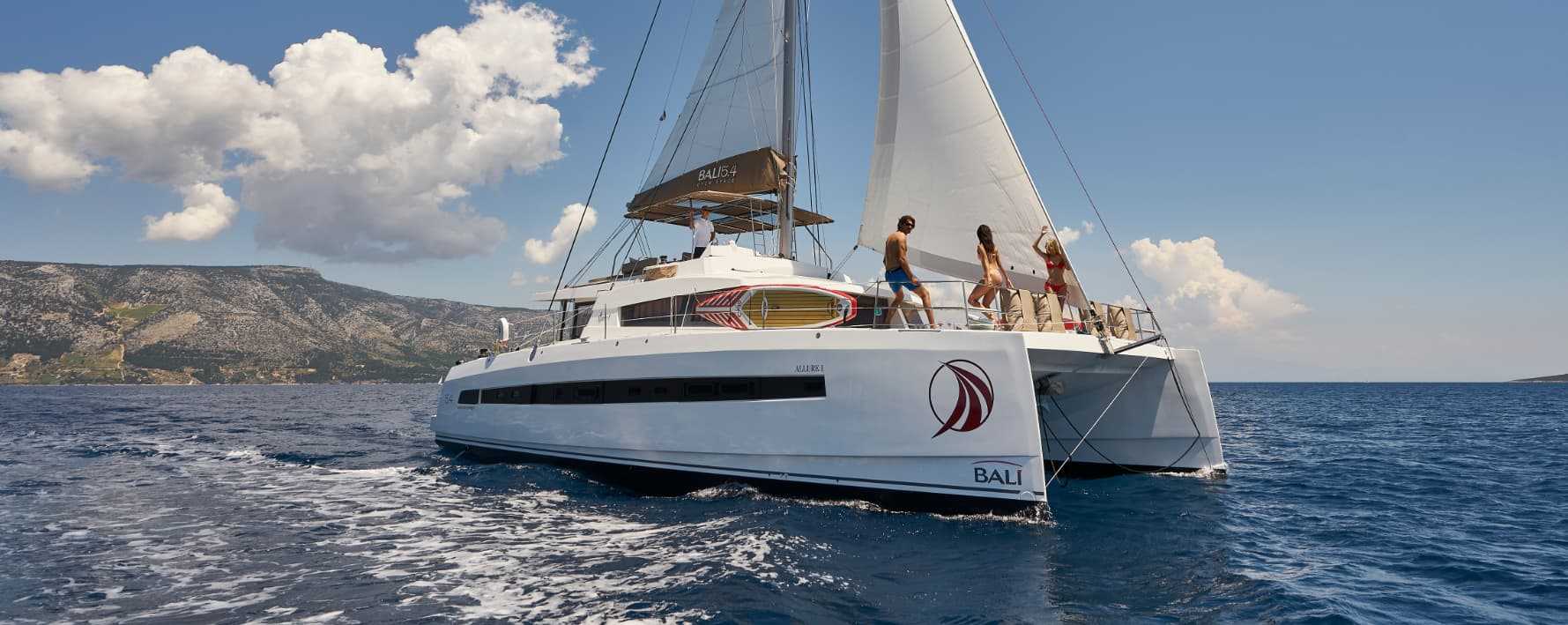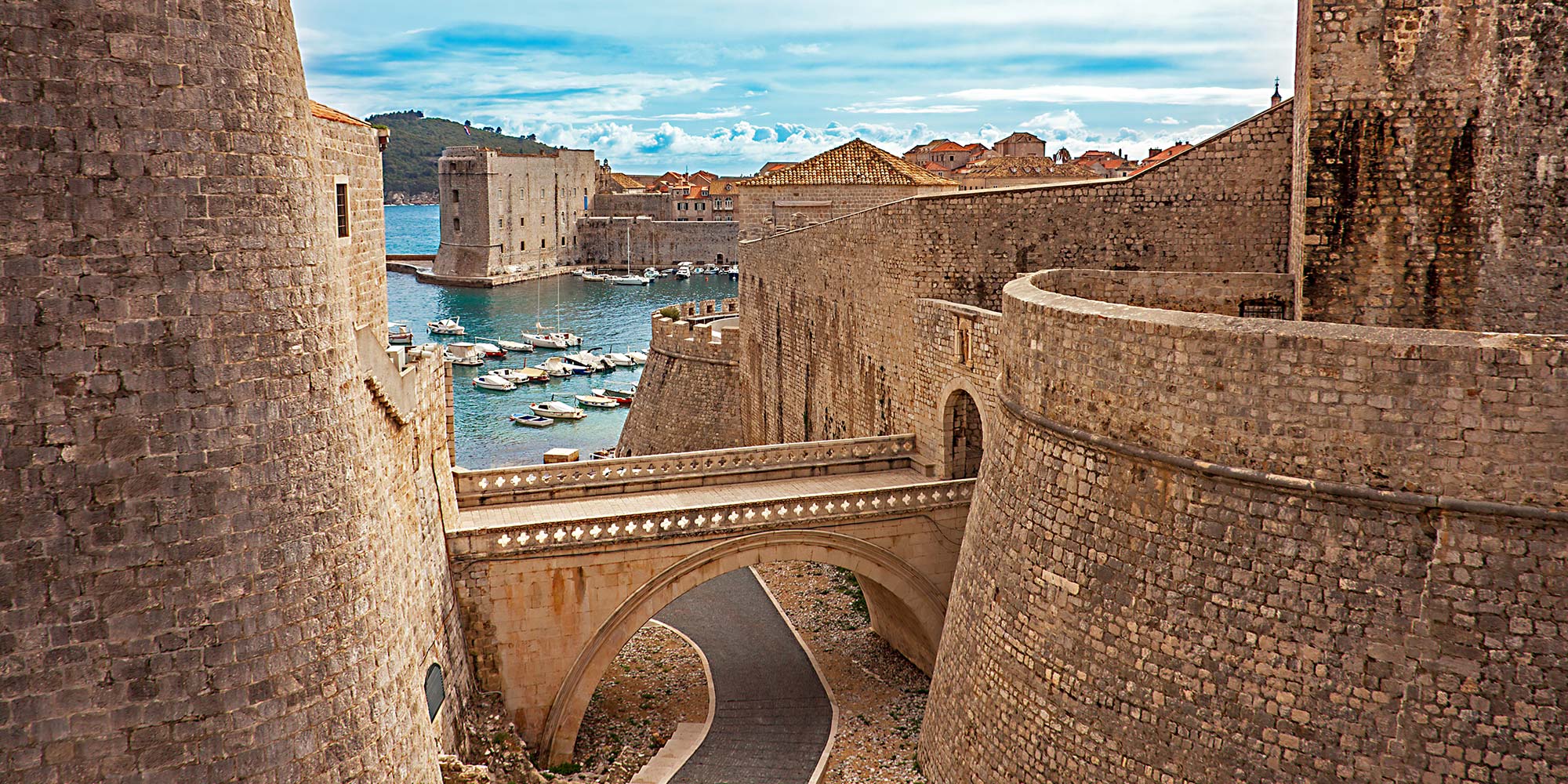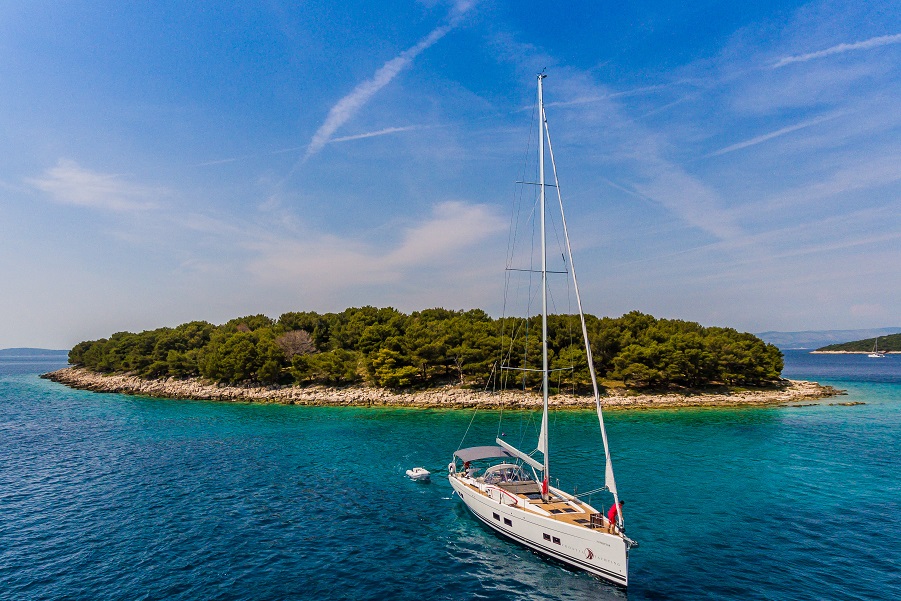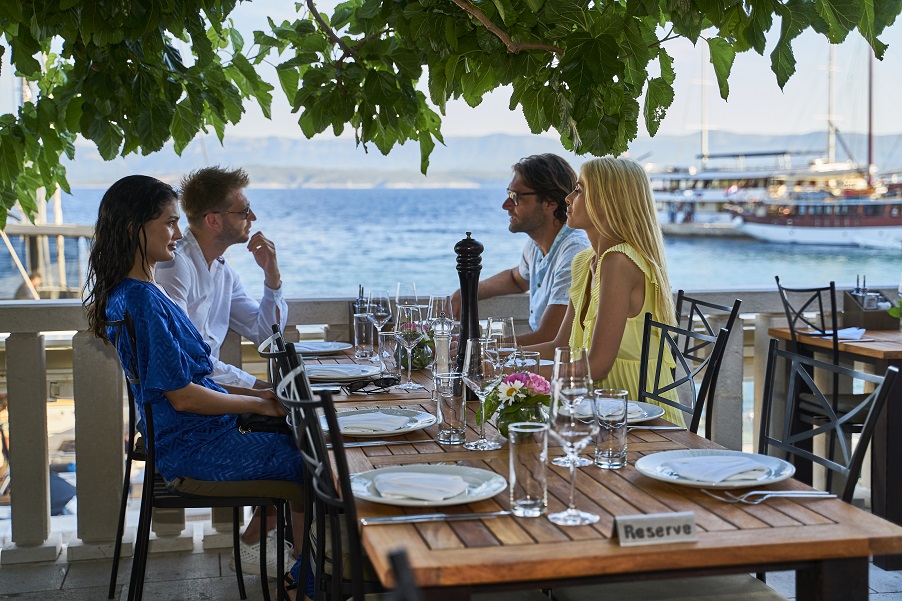What to see in Dubrovnik?

Sailing in Croatia: One of the best activities in Croatia, so go ahead and pack your bags for the best time of your life!
Where to go and what to see – DUBROVNIK – the Pearl of the Adriatic.
Dubrovnik is a beautiful city on the southern coast of Croatia. Its location on the Adriatic Sea and its Old City is alluring for travellers. Dubrovnik is a one-town tourist industry on its own, with endless things to do all year round. As stunning as the clear blue sea around it, the former centre of the independent Republic of Ragusa invites superlatives and attracts the lion's share of Croatia's visitors.
The Old City, a UNESCO World Heritage Site, was founded in the 7th century, and was damaged in 1990 when the Serbs bombed the region. Dubrovnik has worked hard to restore the damaged areas back to their original magnificence, and tourists have now returned to a peaceful and tranquil region.
Enter the city at the Pile Gate to take a walk along the Old City walls and admire the view from different spots along its 2km length. After this, take your time to stroll through the alleyways and old streets in the pedestrian. Take a break or end your day at the Square of the Loggia or at the Stradun of Dubrovnik, both of which are popular spots to enjoy a meal or a drink where both locals and visitors hang out. As one of the most beautiful cities in the Mediterranean, Dubrovnik is known as the Pearl of the Adriatic. The city is steeped in history, and is simply beautiful in the perfect location on the coast next to a shimmering deep blue sea. Artists and intellectuals from around Croatia are drawn to the coastal city where festivals and other cultural activities take place.
Let’s start…
Stradun of Dubrovnik-Undoubtedly one of Europe's most picturesque pedestrian thoroughfares, the Stradun boasts many cafés and restaurants and is a good spot to rest weary feet after a day touring Dubrovnik. The Stradun's unique homes are designed to enable residential living upstairs and business activities on the main level, and are notable for having their main doors and windows under the same arch. Measuring 300 meters in length and famous for its white limestone paving, the street dates back to 1468, although many of the surrounding buildings were built in the 17th century after the devastating earthquake of 1667, when most of Dubrovnik was heavily damaged.
Dubrovnik Cathedral and Treasury- First off, let’s wander within the pedestrian zone and head to the Cathedral of the Assumption. Standing on the site of an older cathedral dating from the 6th century and destroyed by earthquakes, beautiful Dubrovnik Cathedral-also referred to as the Assumption Cathedral (its full name is the Cathedral of the Assumption of the Virgin Mary)-was designed in Baroque style by Andrea Buffalini of Rome. Notable for its three aisles, three apses, and splendid interior décor, the cathedral includes highlights such as paintings by Italian and Dalmatian artists from the 16th to 18th centuries, including Virgin of the Chair by Raphael from the early 1600s. A must see is the cathedral treasury with its many important relics, the most famous being a portion of the cross that Jesus is thought to have been crucified upon. This cathedral is filled with history. Not only is the building an outstanding work of art itself, but it is home to a polyptych by the 19th-century Italian painter Titian called the Assumptions of Mary. The architecture of the altars is something to marvel at, as well as the treasury. Tickets must be purchased to enter the treasury where gold and silver relics made between the 11th and 17th are on display.
The City Gates and walls- The walls that surround the city provide an excellent spot for sightseeing at all angles – it is something you need to see when you are in Dubrovnik.- and for a good reason. The first walls were built around Dubrovnik in the 9th century. Since then, the walls have been rebuilt and fortified numerous times, including the shelling damage from the 1990s. The walls were strengthened when the Turks threatened to invade during the 15th century. The walls offer views and protection by land and by sea. It can be quite a climb to get to the top of these walls, especially when it is hot outside. The path is steep and has little shelter along the way. But once you reach the top, the views will be well worth the climb. For centuries, Dubrovnik's famous Pile Gate has served as the main entrance and is still the most interesting access point to this fabulous old city.
The Square of the Loggia- The Square of the Loggia in Dubrovnik has long been a central gathering point for citizens and visitors alike. Featuring some of Dubrovnik's most famous buildings and public monuments, the square of the Loggia is in the north east section of the old city centre.
Dubrovnik's Gibraltar: Fort Lovrijenac- for its location on a rocky promontory just outside the city's western wall, Fort Lovrijenac has long been one of Croatia's most important fortresses. Also notable for its unusual triangular layout with its three terraces, Fort Lovrijenac - also known as Fort Lawrence - is accessed via two drawbridges and a gateway through its impressive walls, as thick as 12 meters in places. In addition to serving as a tourist attraction, the fort is also used as a venue and backdrop for Dubrovnik's famous Summer Festival and its many theatrical and musical performances.
The Big Fountain of Onofrio and St. Saviour Church- Built between 1438 and 1444, Dubrovnik's famous Big Fountain of Onofrio is probably the best known of the city's many historic monuments. An easy stroll from the Pile Gate, this landmark structure is somewhat smaller today than the original due to damage caused by the earthquake of 1667. An important part of the city's original water supply system (also designed by Onofrio de la Cava) that carried water from the Dubrovacka river, the fountain stands immediately in front of the equally attractive St. Saviour Church (Crkva sv Spasa), built in the early 16th century in thanks for what city elders believed was divine intervention in sparing the city during an earthquake a few years earlier. One of only a few buildings to survive the devastating earthquake of 1667 intact, this small place of worship is well worth visiting for its fine Gothic and Renaissance features.
The Dominican and Franciscan Monasteries- The Dominican Monastery and Museum were built during the 14th century making it as old as the city wall fortifications. Built in a Gothic and Renaissance style, this building is home to many impressive works of art. Dubrovnik's Dominican Monastery was so large that construction required moving parts of the city walls just to accommodate it. Heavily damaged in the 1667 by an earthquake. The architecture of the building itself is a work of art, and inside, a 15th-century cloister designed by local artisans can be found. The cloister was inspired by Maso di Barolomeo. Alongside the cloister, you will find beautiful stained glass windows as well as works by Vlaho Bukovac, Lovro Dobricevic, Nikola Bozidarevic, and Titian.
The Rector's Palace and Cultural Historical Museum- The Rector’s Palace is a beautiful mix of Gothic and Renaissance design and architecture. The palace was built in the 15th century for the Rector governing Dubrovnik. It includes the Rector’s private chambers, administrative offices, public halls, and even a dungeon. Today, the Rectors Palace is the Cultural History Museum. The museum shows off restored rooms and portraits alongside coats of arms and coins that tell the story of Dubrovnik. The architecture of the palace is quite remarkable. Having been rebuilt several times, it still holds onto its historical roots. The Rector’s palace also holds live concerts during the Summer Festival.
The Fort of St. John- on the eastern edge of the old town is the Fort of St. John, known to locals as the Fort of St. Ivan. Once an important part of Dubrovnik's defences, this imposing structure now houses several modern attractions to keep visitors entertained. In the upper area is the Maritime Museum of Dubrovnik featuring displays of Dubrovnik's maritime past illustrated through model boats and naval artefacts, while the lower area contains the Aquarium of Dubrovnik with its many interesting displays of local and exotic fish, as well as a superb collection of seahorses.
Game of Thrones
Dubrovnik is home to several locations used in filming the hit TV show ‘Game of Thrones’. Dubrovnik is the proper setting of King’s Landing, the capital of the fictional Seven Kingdoms realm. If you're a Game of Thrones fan, the Viator Exclusive: 'Game of Thrones' Walking Tour of Dubrovnik is a fun way to see some of Dubrovnik's top historical attractions that also appear in the famous television series. Take a three-hour tour around the Dubrovnik Old Town to see where most of the filming took place and entrance fees to the Dubrovnik city walls and Lovrijenac Fortress.
Upgrading your tour will include an extra one and a half hour trip to Trsteno Arboretum. On this tour, you will follow in the footsteps of your favourite characters. It is like traveling back in time and to another world. Even if you are not a fan, this tour could turn you into one.
















